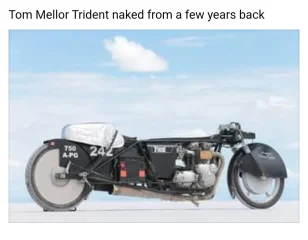Fast Eddie
VIP MEMBER
- Joined
- Oct 4, 2013
- Messages
- 22,700
I’m still not convinced Glen. Even though I understand your point about less power being used, I’m not convinced that this is the decisive destructive force.I suppose the gearing might have effect on longevity at a very high RPM.
This is sort of hypothetical as no one operates this way....no wait I know of one fellow who did and destroyed his Vincent.
Anyway, the question is what is the safe maximum sustainable rpm, presumably one that you could drone on for hours and hours at.
If you had a 20 tooth bike and ran it at 5500 rpm for hours, you would be running at about 89 mph or so. This would be too much for my aging body, and I'm not sure the engine would like it either.
If you insisted on running at the same 5500 rpm with 23 teeth that would be about 103 mph. I'm definitely out on this one
The 89 mph @ 5500 is actually going to be a little easier on the engine than flogging it with a 23 tooth at 102 mph, provided the thing had enough power to do the 102. You are taking a lot more horsepower off at 5500 with the 23 than at 5500 with a 20 tooth. The call it "horsepower hours" in tractor world.
But only a few very strange people would ever ride this way.
Most folks cruise at a speed that suits them, not an rpm. They put a big sprocket on to drop the revs for a given speed and that lower rpm should help the motor live a bit longer, as long as it is not being lugged!
Glen
Power is a significant factor in max possible RPM in some engines, ie drag race engines blow up in seconds when they get it wrong.
But this thread is about max sustainable rpm, I believe (currently at least) that the biggest factor in this question is the destructive forces caused by rpm and lack of balance etc.
There are dozens of factors in play, temperature on the day, amount of wind to provide cooling, type of oil used, age and condition of oil, carb settings and consequent affect on heat, overall engine condition, etc, etc.
But I believe the intent of this thread is to ask, if all else is equal, what is the max sustainable rpm of a Commando engine.
I cannot see that having a 20 or 22 tooth sprocket is going to fundamentally affect that personally.
Its obviously a complicated question though, cos 6 pages in we still haven’t got an answer !
Last edited:

